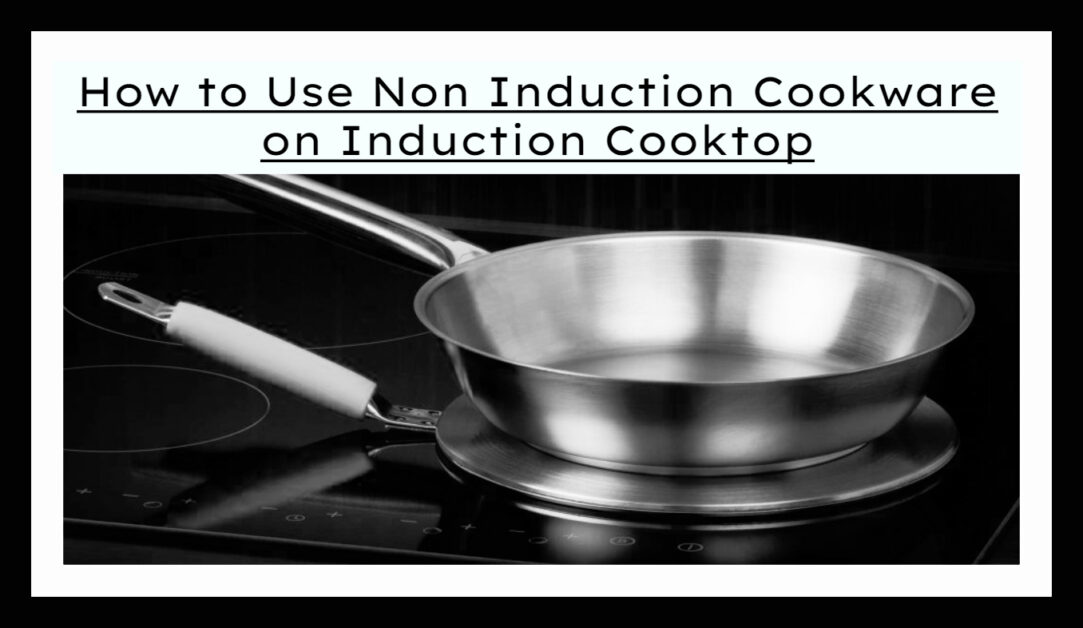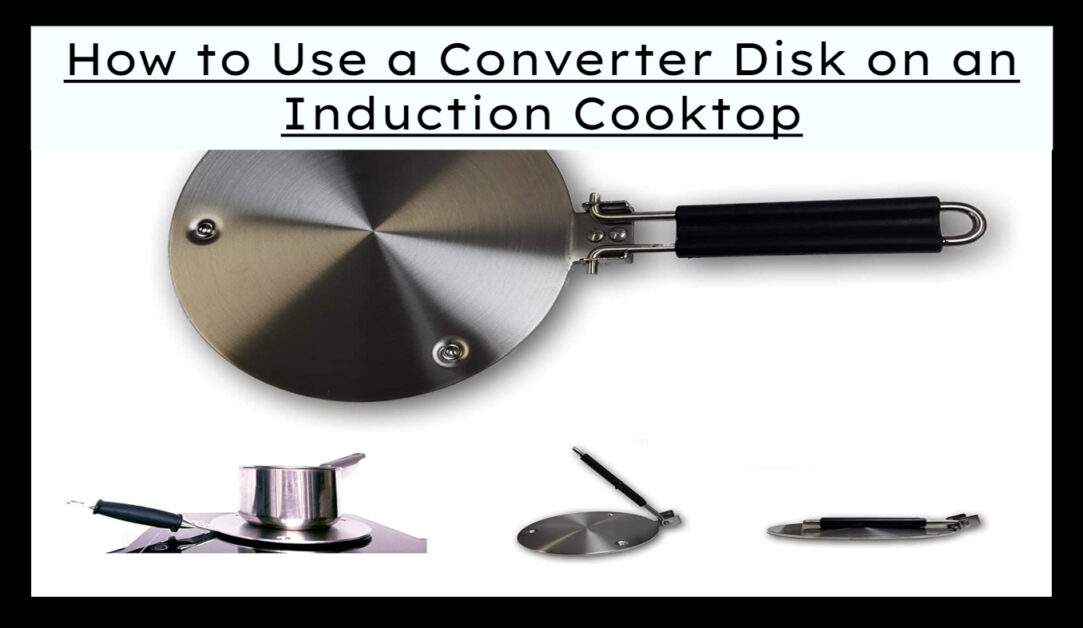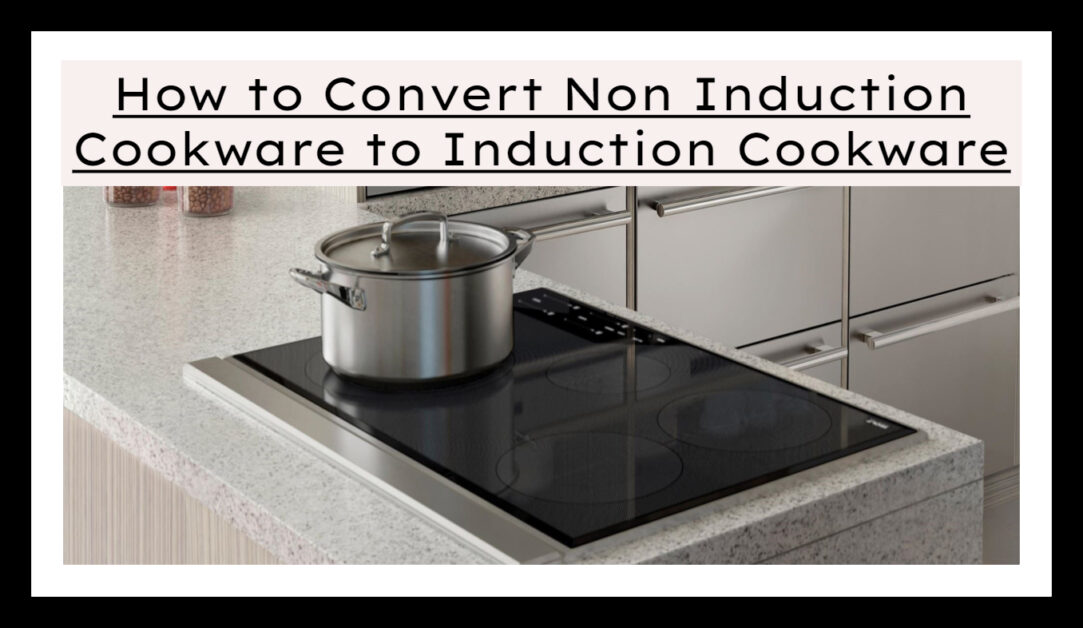Last Updated on February 11, 2024 by Boniface Muriuki
It can be frustrating to buy your best cookware set only to realize that it doesn’t work with your favorite induction cooktop. But all is not lost. There are a few things you can do to make it compatible with an induction cooktop.
This guide offers tips on how to use non induction cookware on induction cooktops without a hassle. It is simple and easily implementable!

What is an Induction Cookware?
Induction cookware is a pot or pan that is designed to work with an induction cooktop. The bottom of the cookware is made from a ferrous material, such as cast iron, which must be strongly magnetic. This material allows the induction current to flow through it.
Noninduction cookware will not work with an induction cooktop because it does not have a ferrous bottom. So, is there a way you can modify the non-magnetic cookware to work with induction cooktops? Let’s find out here:
How to Use Non Induction Cookware On Induction Cooktop Guide
There are several things that you can do to make your non induction cookware work on an induction cooktop. They include:
Use a Converter Disk/ Magnetic Disk
Converter disks/ magnetic disks contain a ferrous material that allows the induction current to flow through it. Simply place a converter disk between your pot and the induction cooktop to make your pot work.

Converter disks are widely available in departmental stores or online shops. You can choose from among many different-sized converters depending on the size of your pot or pan. Here’s a link to Amazon for some converter disks.
Read about some of the best heat diffusers here
Step-by-Step Guide on How to Use Converter Disks
If you are using a converter disk, follow these simple steps to make it work with your induction cooktop:
1. Place the converter disk on your induction cooktop.
2. Place your pot or pan on top of the converter disk.
3. Turn on your induction cooktop and set the cooking temperature. For example, if you are using a pot with a temperature setting of “medium,” set your induction cooktop to “medium.”
4. The converter disk will start to heat up. Do not touch it. You will be able to feel the heat on the bottom of your pot or pan.
5. Cook until your food is ready.
Disadvantages of Using a Converter Disk
Using a converter disk is slower than heating water directly using induction cookware. On average, you should expect to use double the induction cooking time.
The reduced efficacy can be contributed to the unevenness of most pots and pans. The peaks and valleys create air pockets, which reduce the conversion of electrical current to heat. You should note that air is a bad conductor of heat.
As such, these air pockets reduce the rate at which heat is transferred from the converter to the cookware. You may find that your food is not cooking as quickly or evenly.
In addition, you should avoid the following when using a converter disk:
- Pouring cold water on it while still plugged in as this can cause a shock.
- Leaving the converter disk plugged in for more than needed as this can damage or break your induction hob.
In general, using a converter disk should be avoided if you have induction-safe cookware available to use!
Use of Netted Steel
This is one of the most ingenious DIY techniques on how to use non induction cookware on induction cooktops. It involves the use of a regular steel wire mesh sheet. You can obtain this sheet from any hardware shop around you or even online shops such as Amazon.
All you need to do is double fold the netted steel sheet and place it on your induction cooktop. You will then place your pot or pan on top of the netted steel sheet. This will work just fine, and you can enjoy faster cooking time with this technique.
Disadvantages of Using a Netted Steel
This may not be the safest way to use non induction cookware on an induction cooker as some parts of the netting could get very hot, while others could remain cool. You should not touch it when using this technique.
As such, the netting steel sheet can cause injuries in case of contact with bare skin or in case of boiling water splashing on your body.
Additionally, the technique can be quite slow. You may require more time to heat your pot or pan as compared to using induction-safe cookware.
You should use this technique only if you do not have induction cookware.
Use of Computer Thermal Paste
This is another interesting homemade technique on how to use non induction cookware on induction cooktops. The idea behind this technique is easy; all you need to do is apply thermal paste between your non induction cookware and induction hob.
The thermal paste allows the transfer of heat from the induction cooker to your pot or pan. However, this is only a one-time solution and you will need to reapply the paste whenever it loses its adhesive property.
Disadvantages of Using Computer Thermal Paste
The technique is very slow as compared to using induction-safe cookware. It may take time before you start seeing any bubbling.
In addition, this method can only be used for a short time as you will need to reapply thermal paste whenever it loses its adhesive quality.

How to Use Non Induction Cookware on an Induction Cooktop – Conclusion
There are various ways of how to use non induction cookware on an induction cooktop. You can opt for the converter disk or try out the DIY techniques, which are quite easy and handy. Your choice will depend on your cooking needs.
If you want faster cooking times, then you should use induction-safe pots and pans. You should also try out the various techniques to determine which one will work best for your cooking needs.
Try them all if you have no induction safe cookware available to help you enjoy having an induction cooker!
Chef Boniface is a graduate in Culinary Arts from the Institute of Culinary Education, New York. He has worked in several restaurants and is currently the Head Chef at Cavali Restaurant.
He has excelled in developing unique recipes and influencing the menu at the restaurant. He prides himself in sharing his knowledge at thekitchenpot.com where he writes about the best cookware for various recipes.